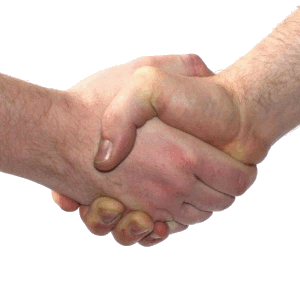Physics Envy
August 3, 2010
The
physical sciences are quite unlike the
social sciences. The physical sciences are grounded in
mathematics, and their predictions are quite accurately expressed by equations. For this reason, their theories are subject to a precise
falsifiability. Other areas of human endeavor are not as precise, and their theories are accompanied by the
waving of hands. As
Rutherford said,[1]
"All science is either physics or stamp collecting."
Physics envy is the tendency of non-scientific disciplines to instantiate their fundamental tenets in mathematical language. Economics, especially, has done this in recent years, with disastrous results. When I took economics as an undergraduate student in 1966, we used the premier textbook of the age, Economics by Paul Samuelson. As I remember, this book had just a single equation. Today, the economics subfield of
quantitative finance is a morass of numbers and theories, as a perusal of
some papers on arXiv will confirm. Now, there's even an equation that quantifies the quality of a handshake.[2-3].

Photo by Tobias Wolter.
According to a press release by the UK division of
Chevrolet[3], a typical person will shake hands about 15,000 time in their lifetime. Although there is much folklore about what constitutes a bad handshake (eeew! Sweaty palms!), Chevrolet-UK decided that it would like to teach its salespeople what constitutes the best handshake. They asked for advice from
Geoffrey Beattie, Professor and Head of Psychological Sciences at the
University of Manchester. Beattie was a good choice because of his previous research interests;[1] and, as a psychologist, he was able to identify all the factors important to handshaking, scoring them on a scale of 1-5.
- e is the quality of eye contact (1=none; 5=direct)
- ve is the quality of verbal greeting (1=totally inappropriate; 5=totally appropriate)
- d is the quality of Duchenne smile (1=totally non-Duchenne smile (false smile); 5=totally Duchenne)
- cg is the completeness of grip (1=very incomplete; 5=full)
- dr is the the dryness of hand (1=damp; 5=dry)
- s is strength (1= weak; 5=strong)
- p is the position of hand (1=back towards own body; 5=other person's bodily zone)
- vi is vigour (1=too low/too high; 5=mid)
- t is the temperature of hands (1=too cold/too hot; 5=mid)
- te is the texture of hands (5=mid; 1=too rough/too smooth)
- c is control (1=low; 5=high)
- du is the duration (1= brief; 5=long)
Although psychology is not a mathematical science, Beattie developed an equation that folds all these factors into a convenient number, PH
PH = [ (e
2 + ve
2)(d
2) + (cg + dr)
2 + π{(4<s>2)(4<p>2)}
2 + (vi + t + te)
2 + {(4<c>2 )(4<du>2)}
2 ]
1/2
The mathematically inclined will see that this is a geometrical mean of factors; but there's the strange appearance of π, and the unusual notation (a<x>b) that seems to mean that you use the value of x if it's between a and b, but set x=0 if it's not. A press release is not an ideal medium for mathematical exposition. I think the equation is in there as an example of the
rhetorical technique called "
argumentum ad verecundiam " (a.k.a., "argumentum ad auctoritatem"); that is,
it's true because someone who knows says it's true. When training salespeople, I think the list of factors to monitor will be much more effective than the equation. As Beattie summarizes [3]
"The rules for men and women are the same: right hand, a complete grip and a firm squeeze (but not too strong) in a mid-point position between yourself and the other person, a cool and dry palm, approximately three shakes, with a medium level of vigour, held for no longer than two to three seconds, with eye contact kept throughout and a good natural smile with a slow offset with, of course, an appropriate accompanying verbal statement, make up the basic constituent parts for the perfect handshake."
Chevrolet-UK notes that there can be significant regional and gender differences in handshaking. I guess if you're a Klingon, you would invert the equation.
References:
- Ernest Rutherford quotation page on Wikiquotes.
- Joseph Calamia, "Danger! Car Salesmen Now in Possession of 'Perfect Handshake' Equation," Discover Magazine Blog, July 19, 2010.
- Scientists Create Formula for the Perfect Handshake!, Chevrolet-UK Press Release, July 14, 2010.
- Geoffrey Beattie and Heather Shovelton,"Why the spontaneous images created by the hands during talk can help make TV advertisements more effective," British Journal of Psychology, vol. 96, no. 1 (February 2005), pp. 21-37.
Permanent Link to this article
Linked Keywords: physical sciences; social sciences; mathematics; falsifiability; waving of hands; Rutherford; Physics envy; quantitative finance; arXiv; Chevrolet; Geoffrey Beattie; University of Manchester; rhetorical; argumentum ad verecundiam; Klingon